Peugeot Traveller vs Toyota Proace City – Differences & prices compared
Two cars, one duel: Peugeot Traveller meets Toyota Proace City.
Which one wins in performance, efficiency and value for money? Find out now!
Costs and Efficiency:
Price and efficiency are key factors when choosing a car – and this is often where the real differences emerge.
Toyota Proace City has a decisively advantage in terms of price – it starts at 20800 £, while the Peugeot Traveller costs 34800 £. That’s a price difference of around 14027 £.
Fuel consumption also shows a difference: Toyota Proace City manages with 5.30 L and is therefore distinct more efficient than the Peugeot Traveller with 7 L. The difference is about 1.70 L per 100 km.
In terms of energy consumption, the advantage goes to the Toyota Proace City: with 18.10 kWh per 100 km, it’s clearly perceptible more efficient than the Peugeot Traveller with 24.30 kWh. That’s a difference of about 6.20 kWh.
As for range, the Peugeot Traveller performs barely noticeable better – achieving up to 351 km, about 8 km more than the Toyota Proace City.
Engine and Performance:
Power, torque and acceleration are the classic benchmarks for car enthusiasts – and here, some clear differences start to show.
When it comes to engine power, the Peugeot Traveller has a noticeable edge – offering 180 HP compared to 136 HP. That’s roughly 44 HP more horsepower.
In acceleration from 0 to 100 km/h, the Peugeot Traveller is minimal quicker – completing the sprint in 10.60 s, while the Toyota Proace City takes 11.50 s. That’s about 0.90 s faster.
In terms of top speed, the Toyota Proace City performs barely noticeable better – reaching 186 km/h, while the Peugeot Traveller tops out at 185 km/h. The difference is around 1 km/h.
There’s also a difference in torque: Peugeot Traveller pulls noticeable stronger with 400 Nm compared to 300 Nm. That’s about 100 Nm difference.
Space and Everyday Use:
Cabin size, boot volume and payload all play a role in everyday practicality. Here, comfort and flexibility make the difference.
Seats: Peugeot Traveller offers a bit more seating capacity – 8 vs 7.
In curb weight, Toyota Proace City is significantly lighter – 1366 kg compared to 1953 kg. The difference is around 587 kg.
In terms of boot space, the Peugeot Traveller offers significantly more room – 2011 L compared to 912 L. That’s a difference of about 1099 L.
In maximum load capacity, the Peugeot Traveller performs a bit better – up to 3300 L, which is about 607 L more than the Toyota Proace City.
When it comes to payload, Peugeot Traveller slight takes the win – 914 kg compared to 869 kg. That’s a difference of about 45 kg.
Who comes out on top?
Overall, the Peugeot Traveller shows itself to be wins solidly and secures the title of DriveDuel Champion.
It convinces with the more balanced overall package and proves to be the more versatile choice for everyday use.
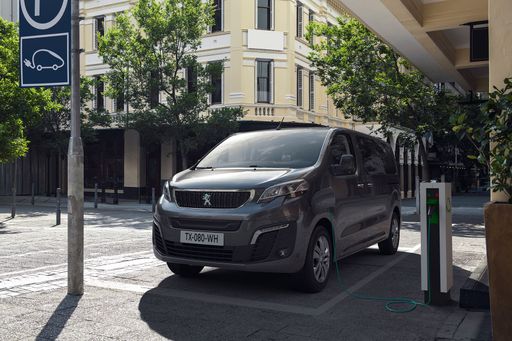
Peugeot Traveller
Peugeot Traveller
The Traveller captivates with its refined blend of comfort and versatility, making it an ideal choice for both family adventures and professional needs. Its spacious interior accommodates a remarkable range of passenger and cargo configurations, ensuring flexibility for any journey. With an emphasis on safety and modern features, the Traveller delivers a remarkable driving experience that caters to diverse lifestyles.
details @ media.stellantis.com
@ media.stellantis.com
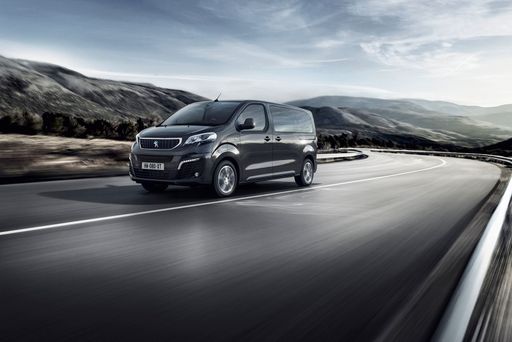 @ media.stellantis.com
@ media.stellantis.com
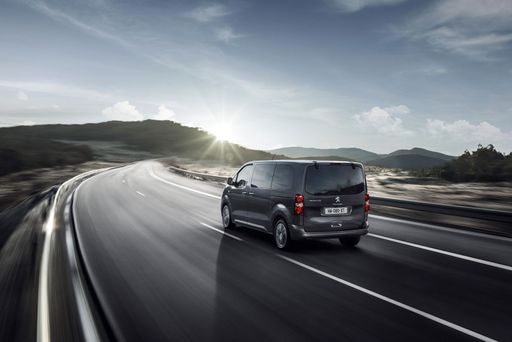 @ media.stellantis.com
@ media.stellantis.com
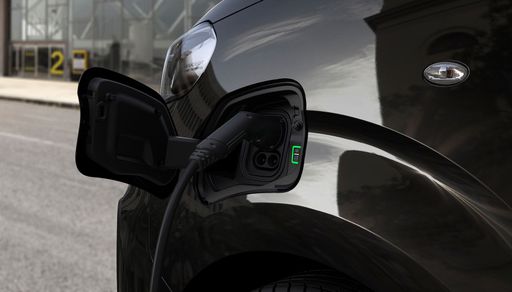 @ media.stellantis.com
@ media.stellantis.com
Toyota Proace City
The Toyota Proace City High Roof Combi is designed to seamlessly blend practicality with comfort, making it an ideal choice for families and businesses alike. Its versatile interior allows for flexible seating and cargo arrangements, catering to a variety of transport needs. Equipped with modern technology and advanced safety features, this vehicle ensures a reliable and secure driving experience.
details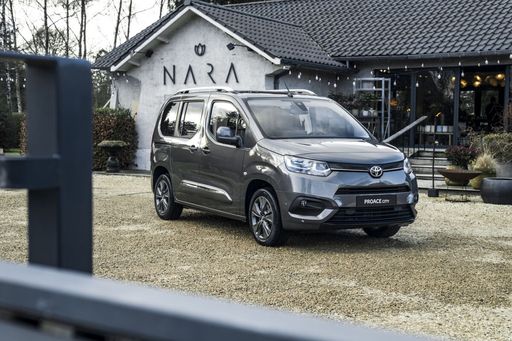 @ Toyota Deutschland
@ Toyota Deutschland
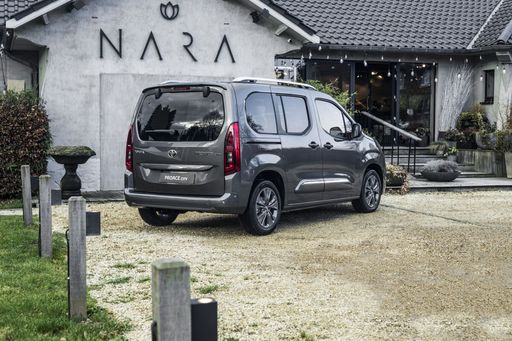 @ Toyota Deutschland
@ Toyota Deutschland
 @ Toyota Deutschland
@ Toyota Deutschland
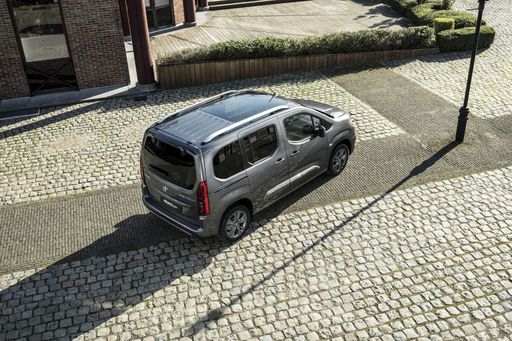 @ Toyota Deutschland
@ Toyota Deutschland
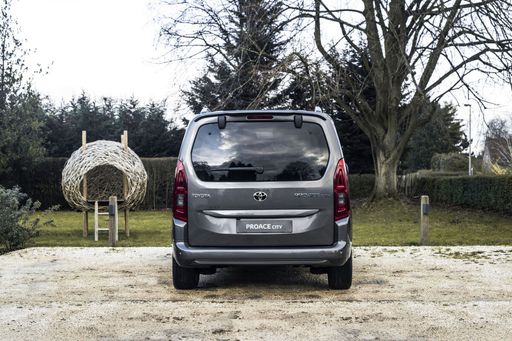 @ Toyota Deutschland
@ Toyota Deutschland
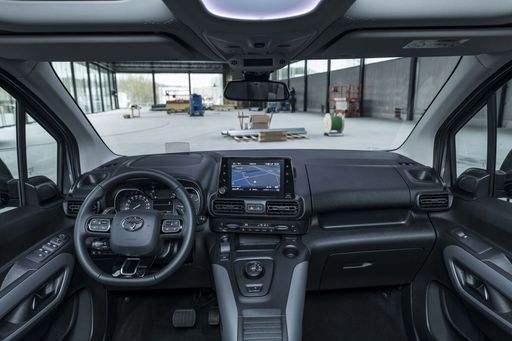 @ Toyota Deutschland
@ Toyota Deutschland

|

|
|
|
|
Costs and Consumption |
|
|---|---|
|
Price
34800 - 52200 £
|
Price
20800 - 44100 £
|
|
Consumption L/100km
7 - 7.1 L
|
Consumption L/100km
5.3 - 6.3 L
|
|
Consumption kWh/100km
24.3 - 25 kWh
|
Consumption kWh/100km
18.10 kWh
|
|
Electric Range
217 - 351 km
|
Electric Range
343 km
|
|
Battery Capacity
-
|
Battery Capacity
-
|
|
co2
0 - 188 g/km
|
co2
0 - 146 g/km
|
|
Fuel tank capacity
70 L
|
Fuel tank capacity
50 - 61 L
|
Dimensions and Body |
|
|---|---|
|
Body Type
Bus
|
Body Type
High Roof Estate
|
|
Seats
8
|
Seats
5 - 7
|
|
Doors
5
|
Doors
4 - 5
|
|
Curb weight
1953 - 2240 kg
|
Curb weight
1366 - 1664 kg
|
|
Trunk capacity
1624 - 2011 L
|
Trunk capacity
322 - 912 L
|
|
Length
4983 - 5333 mm
|
Length
4401 - 4751 mm
|
|
Width
1920 mm
|
Width
1848 mm
|
|
Height
1890 mm
|
Height
1812 - 1818 mm
|
|
Max trunk capacity
2700 - 3300 L
|
Max trunk capacity
2126 - 2693 L
|
|
Payload
850 - 914 kg
|
Payload
525 - 869 kg
|
Engine and Performance |
|
|---|---|
|
Engine Type
Electric, Diesel
|
Engine Type
Petrol, Diesel, Electric
|
|
Transmission
Automatic
|
Transmission
Manuel, Automatic
|
|
Transmission Detail
Reduction Gearbox, Automatic Gearbox
|
Transmission Detail
Manual Gearbox, Reduction Gearbox, Automatic Gearbox
|
|
Drive Type
Front-Wheel Drive
|
Drive Type
Front-Wheel Drive
|
|
Power HP
136 - 180 HP
|
Power HP
102 - 136 HP
|
|
Acceleration 0-100km/h
10.6 - 14.2 s
|
Acceleration 0-100km/h
11.5 - 13.2 s
|
|
Max Speed
130 - 185 km/h
|
Max Speed
135 - 186 km/h
|
|
Torque
270 - 400 Nm
|
Torque
205 - 300 Nm
|
|
Number of Cylinders
4
|
Number of Cylinders
3 - 4
|
|
Power kW
100 - 132 kW
|
Power kW
75 - 100 kW
|
|
Engine capacity
2184 cm3
|
Engine capacity
1199 - 1499 cm3
|
General |
|
|---|---|
|
Model Year
2024 - 2025
|
Model Year
2024 - 2025
|
|
CO2 Efficiency Class
A, G
|
CO2 Efficiency Class
E, A
|
|
Brand
Peugeot
|
Brand
Toyota
|
What drivetrain options does the Peugeot Traveller have?
Available configurations include Front-Wheel Drive.
The prices and data displayed are estimates based on German list prices and may vary by country. This information is not legally binding.
